CETA is the CETA Canada EU secret trade deal which has been negotiated for some years behind our backs, a companion to the slightly better-known TTIP deal between the US and the EU. While TTIP appears to have been stopped, thanks to several million signatures on a European petition (and now a President who thinks that any deals he hasn’t made are an attack on the USA), CETA looks increasingly likely to be finalised.
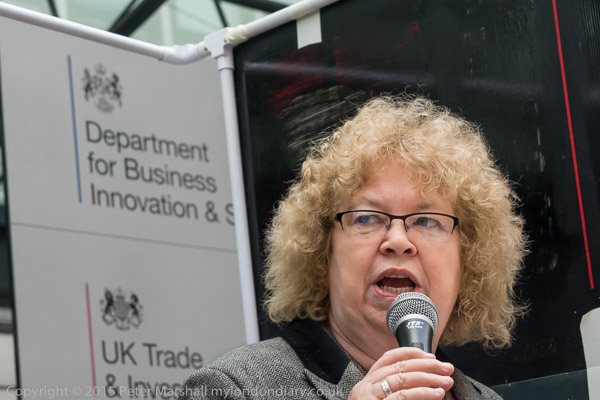
London Green MEP Jean Lambert
For once, Trump is at least in part right. TTIP and CETA are not made in the US’s interests, but neigther are they made to advantage the EU. THe interests they primarily serve are not those of any state but of the huge corporations, although the US’s position is more aligned with these compared to the EU.
These and similar treaties are aimed at marginalising state interests in favour of corporate intesters, and ending the ability of states to act in a way that disadvantages corporate profit. Democracy goes out of the window when treaties provide a mechanism for corporates to challenge government policies on the grounds that these may limit their right ot profit.
Free trade isn’t necessarily a good thing, and rather more important as the basis for gree trade is that trade should be fair, and in particular fair to those who actually produce the goods or services that are to be traded. Unfortunately this isn’t what trade agreements are about.
We started the day outside the Dept of Business, Innovation & Skills in Victora St, a few hundred yards from Parliament, where protesters had erected a mock reading room. In the other EU countries MPs can read the secret agreements at the US Embassy, though they are not allowed to take in phones, cameras or iPads or to make any exact copies of the texts. But in the UK there is no such reading room, the government having agreed to set one up but it has failed to do so. Our government – and the others involved – want to keep these deals secret, and to approve them without subjecting them to any public scrutiny.
If we were allowed to see the details it is almost certain these deals would be rejected. SO the idea is to push them thorugh in secret, only revealing the details when they are signed and approved and it is too late – and one of the details is that it will then be imposible to withdraw. If they are completed while we are still in Europe, one of the details is that we will still be bound by them when we leave.
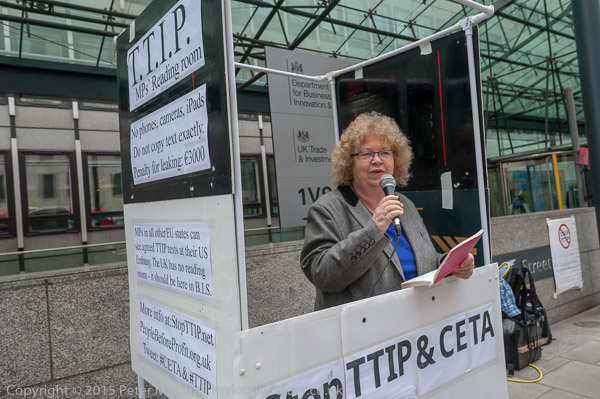
There were a few minor moments of friction when security at the BIS objected to the parotesters fixing anything to their building and refused to let them enter the building to deliver a letter to the minister – though a civil servant did come out, talk civilly with the protesters and accept it. But is was perhaps a little dissappointingly low key and rather small, though one of our MEPs, London Green MEP Jean Lambert, who I think had been able to view the agreed documents in Brussels (but not to copy them) did come along to speak.

After the protest at the BIS came a banner drop, one of my least favourite froms of protest. While it can be of interest when made from a particularly interesting or apt location, usually these are simply rather boring and offering few chances of an interesting picture.
This one was from Westminster Bridge and the idea was to photogaph it with the Houses of Parliament in the background to highlit the fact that ours is the only EU Parliament that will not be allowed to vote on either CETA or TTIP, as our government can apparently make treaties without needing the approval of Parliament.
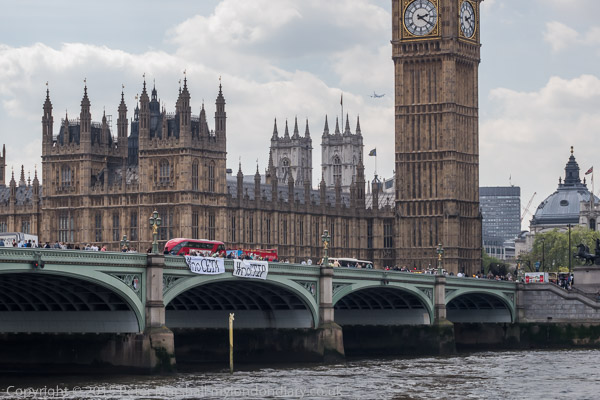
I’ve written before about Banner Drops, and in particular about the problems of doing them on Westminster Bridge. This again demonstrated the problems – and showed that a merely big banner isn’t enough, you would need one that was truly huge for it to work well.
Since the day was mainly aimed at CETA, which is much closer to being approved, largly because very few people have heard of it, the logical place to end the day of protest was outside the Canadian High Commission at the west edge of Trafalgar Square.
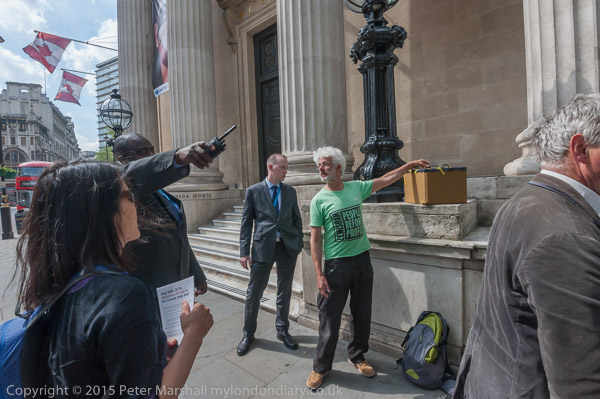
Sewcurity there didn’t share that view and tried to get the protesters to move away, and made them remove any of the banners and posters from the walls or railings. But the pavement outside is the public highwy, and the protesters knew that their rights meant they could protest there, and they did so. Among those speaking was Maude Barlow, Chair of the Council of Canadians, and MEP Jean Lambert came to speak again.
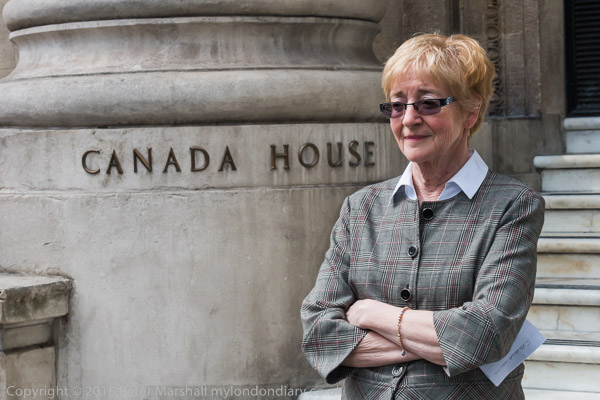
The day was to continue with an evening meeting (where these two were among the speakers as well) but by now I’d had enough. And though meetings are vital in campaigns, they seldom have much to offer for photography.
BIS protest against CETA & TTIP
Banner Drop against CETA & TTIP
Canada House vigil condemns CETA
______________________________________________________
There are no adverts on this site and it receives no sponsorship, and I like to keep it that way. But it does take a considerable amount of my time and thought, and if you enjoy reading it, a small donation – perhaps the cost of a beer – would be appreciated.
My London Diary : Buildings of London : River Lea/Lee Valley : London’s Industrial Heritage
All photographs on this and my other sites, unless otherwise stated, are taken by and copyright of Peter Marshall, and are available for reproduction or can be bought as prints.
To order prints or reproduce images
________________________________________________________